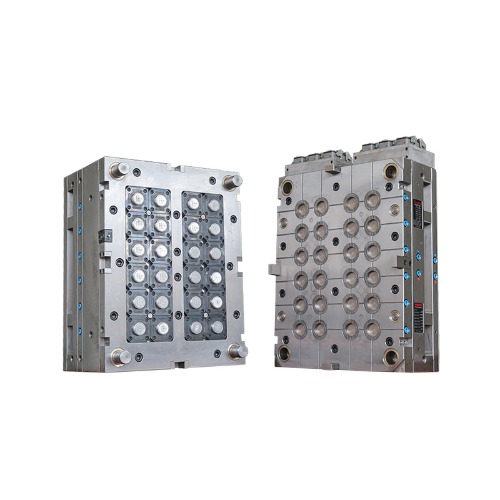Choosing the right cap and closure mold is essential for the successful production of caps and closures for various products. Here are some factors to consider when selecting a cap and closure mold:
Design Requirements: Evaluate the specific design requirements of the cap or closure you need. Consider factors such as size, shape, thread type, tamper-evident features, and any other unique design elements. Ensure that the mold you choose can accommodate these requirements and produce the desired end product.
Material Compatibility: Caps and closures are made from different materials such as plastic, metal, or a combination of both. Consider the material compatibility with the mold. Plastic molds are commonly used for plastic caps, while metal molds may be required for metal or composite closures. Ensure that the mold material can withstand the temperatures and pressures required for the specific material you will be using.
Production Volume: Determine the production volume you require. Cap and closure molds come in different sizes and configurations, and some are designed for high-volume production while others are suitable for smaller quantities. Consider the production capabilities of the mold, including its cycle time, cooling system, and overall efficiency. Choose a mold that can meet your production requirements.
Mold Quality and Durability: Assess the quality and durability of the mold. Look for molds made from high-quality materials and manufactured with precision. A well-built mold will last longer, produce consistent and high-quality caps or closures, and require less maintenance and repair. Check the reputation of the mold manufacturer and review customer feedback to ensure reliability.
Customization and Flexibility: Consider whether you require customization options or the ability to make modifications to the mold in the future. Some molds may offer interchangeable inserts or adjustable components to accommodate different cap or closure designs. This flexibility can be beneficial if you anticipate changes or variations in your product line.
Cost and Return on Investment: Evaluate the cost of the mold and consider the return on investment. While it's essential to work within your budget, prioritize the overall value and quality of the mold over the initial cost. A well-designed and durable mold can provide long-term cost savings through efficient production, reduced downtime, and extended mold lifespan.
Technical Support and After-Sales Service: Consider the technical support and after-sales service provided by the mold manufacturer. It's important to have access to technical assistance, training, and support throughout the mold's lifespan. Choose a manufacturer that offers reliable customer support and assistance when needed.





 English
English Español
Español










